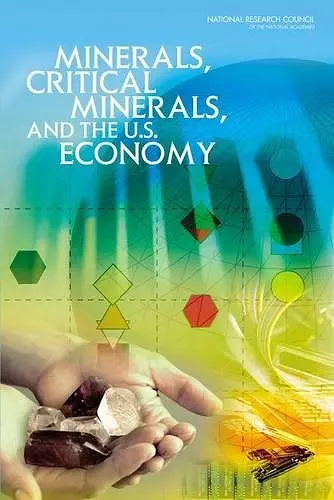Minerals, Critical Minerals, and the U.S. Economy
National Research Council author Division on Earth and Life Studies author Board on Earth Sciences & Resources author Committee on Earth Resources author Committee on Critical Mineral Impacts of the US Economy author
Format:Paperback
Publisher:National Academies Press
Published:11th Mar '08
Currently unavailable, and unfortunately no date known when it will be back

Minerals are part of virtually every product we use. Common examples include copper used in electrical wiring and titanium used to make airplane frames and paint pigments. The Information Age has ushered in a number of new mineral uses in a number of products including cell phones (e.g., tantalum) and liquid crystal displays (e.g., indium). For some minerals, such as the platinum group metals used to make cataytic converters in cars, there is no substitute. If the supply of any given mineral were to become restricted, consumers and sectors of the U.S. economy could be significantly affected. Risks to minerals supplies can include a sudden increase in demand or the possibility that natural ores can be exhausted or become too difficult to extract. Minerals are more vulnerable to supply restrictions if they come from a limited number of mines, mining companies, or nations. Baseline information on minerals is currently collected at the federal level, but no established methodology has existed to identify potentially critical minerals. This book develops such a methodology and suggests an enhanced federal initiative to collect and analyze the additional data needed to support this type of tool.
ISBN: 9780309112826
Dimensions: unknown
Weight: unknown
262 pages